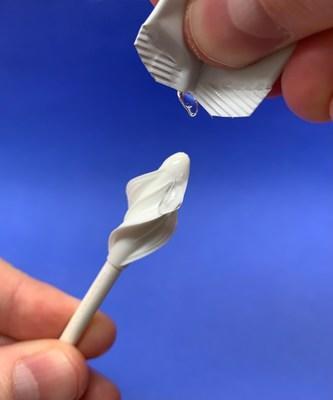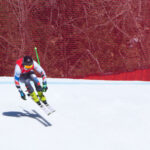Doctors discuss health impact from wildfire smoke and importance of nasal hygiene
SILICON VALLEY, Calif., March 2, 2022 /PRNewswire/ — Silicon Valley Innovations, a medical device company, sees health implications in United Nations report issued last week that warns of a “global wildfire crisis”, with wildfires expected to increase by one-third by 2050 and 50 percent by 2100.
“So keeping the front porch and entry hallway clean—i.e. the nose—helps keep the rest of the house clean.”
The report also details the health risks of inhaling wildfire smoke, including respiratory and cardiovascular impacts and increased health effects for the most vulnerable.
According to the report, wildfire smoke contains fine particulate matter and potentially toxic combustion products. Epidemiological studies consistently show associations between exposure and adverse respiratory health outcomes (Liu et al. 2015; Kondo et al. 2019).
Bob Geng, MD, an allergist/immunologist at Rady Children’s Hospital-San Diego and an assistant clinical professor at UC San Diego School of Medicine, echoed the warnings in the UN’s report.
“There are a variety of different irritants and chemicals that are released from wildfires, and those agents have a significant impact on our health in a multi-organ system fashion,” Geng said. “These can all contribute to significant adverse events that have immediate and potentially long-term consequences.”
Geng said he often sees an uptick in respiratory issues during wildfire outbreaks near his practice in San Diego. “There are usually a number of acute concerns, such as patients calling in with worsening symptoms from their allergies or asthma. These patients often need to use more immediate rescue or symptomatic medications during these times,” Geng said.
Keith Matheny, MD, FARS, an ENT surgeon at Collin County Ear Nose and Throat in Dallas, TX, said it’s a point of concern even for those far from hotbeds of wildfire activity like California.
“If we’re talking about a 50 percent increase in wildfires in 80 years, the general air quality in the atmosphere will continue to deteriorate during that time,” Matheny said. “So, it’s something for everyone to be aware of, especially those who have underlying chronic conditions such as asthma or COPD, that we need to do all we can to protect our bodies.”
Matheny recommends staying indoors and using strong air filtration systems during wildfire outbreaks. He also said dangerous particles can potentially enter the respiratory tract through the nose, making it the entry point not only for bacteria and viruses but also particles in the air which contain allergens and irritants released by the fires.
Both physicians underscored the importance of nasal hygiene becoming a routine in the general population to help potentially decrease the impact on the respiratory system.
“The hairs in the nose and mucus tend to trap a lot of particles, which can gradually mobilize from front to back in the nose and end up in the throat or potentially even in the lungs,” Matheny said. “So keeping the front porch and entry hallway clean—i.e. the nose—helps keep the rest of the house clean.”
Geng and Matheny both recommend maintaining nasal hygiene with standard procedures such as washing out the sinuses, but they also highlighted a new device for nasal cleansing that they recommend to patients called NasoClenz.™ It includes anatomically designed nasal applicators used with a proprietary gel to clean the skin and hair in the front part of the nose. In the setting of smoke with particles being inhaled through the nose, they believe cleaning with NasoClenz could prove to be helpful.
Geng said for patients who have underlying nasal inflammation, the proprietary NasoClenz gel helps to lubricate while cleansing, which he feels might help alleviate symptoms that can be exacerbated by wildfires.
Dr. Gail Lebovic, CEO of Silicon Valley Innovations and inventor of NasoClenz said, “We live in a world where our respiratory system is increasingly exposed to harmful materials in the air including smog, smoke from wildfires, allergens and of course germs. The nose plays a central role in our health and, in my opinion, has been underestimated in its importance as a direct gateway into our body.”
Lebovic envisions a world where everyone incorporates nasal hygiene into their daily personal hygiene routine — much like brushing your teeth or washing your hands.
Likewise, Matheny recommends using NasoClenz frequently — especially during times of heightened wildfire activity and allergy season.
“It’s a good daily practice for anyone, and certainly those who are living in areas with a lot of wildfires or environmental pollutants,” Matheny said.
The product is currently available at NasoClenz.com.
About Silicon Valley Innovations
Silicon Valley Innovations’ mission is to create technologic solutions that help people lead happier, healthier lives. The company was founded by Dr. Gail Lebovic, a surgeon, inventor, entrepreneur, and internationally recognized expert on breast reconstruction and surgical options after cancer. With more than three decades of experience in the medical device industry, Dr. Lebovic and her team are committed to creating unique devices that solve significant health problems. To learn more about Silicon Valley Innovations, visit svi-inc.com.
Contact: Liz Dowling, (415) 388-2794
Dowling & Dennis PR
Liz@dowlingdennis.net


View original content to download multimedia:https://www.prnewswire.com/news-releases/new-un-report-warns-of-wildfire-crisis-301493737.html
SOURCE Silicon Valley Innovations





